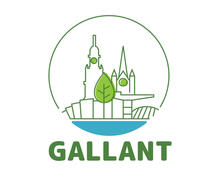We have previously reported some details of ESRC Big Data Phase 2, and in this posting we provide a little more detail the elements that link most directly to the previous work of PASCAL at the University of Glasgow.
Some £14 million of core funding has been given to three Big Data centres (Glasgow, UCL+Leeds, Essex) and an additional £14million has been provided to these centres in capital funding from various ESRC sources for a total of approximately £28 million.
The Urban Big Data Centre at the University of Glasgow is a complex project consisting of many work packages, 26 Co-Investigators, 17 new dedicated appointments and a dedicated building in Lilybank Gardens. It is led by Professor Piyushimita Thakuriah.
Amongst the Work Packages are a number of Urban Research Projects (URPs). This includes the following project with Mike Osborne, Co-Director of PASCAL and Keith Kintrea of Urban Studies as PrincipaI Investigators. It is summarised below.
URP3: Educational Disadvantage and Place - Unequal educational outcomes are a key policy concern, reflecting vital national questions about the competitiveness of the UK and Scottish economies, and about social mobility and social justice. Educational inequalities exhibit strong spatial dimensions, even within the Scottish comprehensive education system which has been less subject than elsewhere in the UK to neoliberal reform on grounds of ‘choice’.
In its 2013-16 Corporate Plan, Education Scotland has highlighted place-based differences in educational outcomes as a key factor ‘holding Scotland back’. At urban level these themes are frequently wrapped together in the concept of the Learning City or Region. The project aims to develop new understandings of the drivers of spatial educational inequalities, including neighbourhood factors, to inform educational and urban policy. The Urban Big Data Centre provides a powerful means to explore these drivers by offering access to linked data on the learning trajectories of individual young people, their post-school destinations, the households and neighbourhoods they live in, and the educational institutions they attend. It will provide the means to consider how educational disadvantage is influenced by residential segregation processes (including the divisions created by resurgent private renting), by ‘neighbourhood effects’ across the spectrum of urban areas, and by spatial planning and urban policy.
The project will require the integration of: local authority, Scottish Government, and Education Scotland data on the learners and their schools; Department of Work and Pensions and Scottish Funding Council data on the educational and labour market destinations of school leavers; HE data from UCAS and HESA on courses, qualifications and post-HE destinations; neighbourhood data from Census and other sources; housing data from Registers of Scotland, social landlords and others. Links will be made also to the UNESCO International Platform for Learning Cities. The platform provides a range of metrics but this project would aim to go beyond these, feeding into the Urban Indicators project (Methods Research Project (MRP)3) in the process.
In addition to the core funding a further tranche of add-on funding was also won to develop a a Contextual Multimedia Data Resource (CMDR). This includes a survey of a representative sample of 2000 people in Glasgow, which amongst other things will look at educational backgrounds, behaviours and preferences as well as measures related to residence, neighbourhood and lifestyle. The PrincipaI Investigator for this part of the add-on is Mike Osborne and he is being assisted by Marta Moskal, Lord Kelvin/Adam Smith Research Fellow in the School of Education.
Post-Doctoral appointments will be made for both URP3 and the survey.
spy offers | NikeDiscussion topics:
- Log in to post comments













Latest Comments